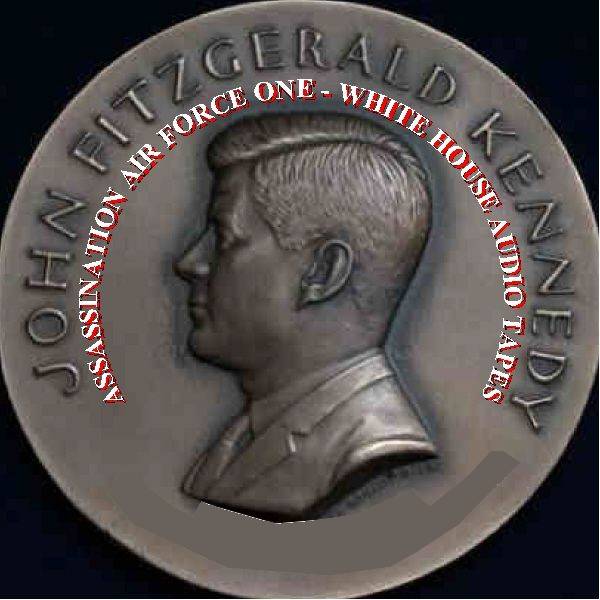
John F. Kennedy Assassination White House – Air Force One
$19.50
Description
JFK Assassination: Timeline, Recordings, and Key Figures
Detailed Timeline of Main Events
November 22, 1963:
- Morning: President John F. Kennedy has not yet boarded Air Force One (SAM 26000) at Carswell AFB near Fort Worth, Texas, following a breakfast event. Recordings on the aircraft begin at this point.
- Morning: Air Force One flies from Carswell AFB to Love Field outside Dallas with President Kennedy onboard (at which point it is referred to as “Air Force One”).
- Afternoon (Central Time): President John F. Kennedy is assassinated in Dallas, Texas.
- Afternoon: Vice President Lyndon B. Johnson is sworn in as the 36th President of the United States onboard Air Force One at Love Field before the flight departs for Andrews AFB.
- Afternoon/Evening: Air Force One flies from Love Field in Dallas to Andrews AFB outside Washington D.C. Recordings capture communications between Air Force One, SAM 26000 (when JFK was not on board), SAM 86972 (carrying Cabinet members), Andrews AFB, and the White House Situation Room (“Crown”).
- Post-Assassination: President Lyndon B. Johnson begins making phone calls, recorded on his own system, dealing with the immediate aftermath of the assassination. These conversations continue for several years (up to 1967).
- Post-Assassination: SAM 86972, carrying Press Secretary Pierre Salinger, Secretary of State Rusk, Secretary of Agriculture Freeman, and other officials, is en route from Hawaii to Japan when the assassination occurs. The aircraft returns to Hickam AFB in Hawaii to refuel before flying directly to Andrews AFB.
November 1963 – 1967:
- President Lyndon B. Johnson’s White House recordings capture numerous phone conversations related to the Kennedy assassination and its aftermath.
- Topics discussed in LBJ’s recordings include:
- The immediate aftermath of the assassination.
- The transition between the Kennedy and Johnson administrations.
- Secret Service protection for President Johnson (including a discussion with J. Edgar Hoover about a bulletproof car).
- Continuing President Kennedy’s agenda.
- Tributes to President Kennedy.
- The formation of the Warren Commission.
- Discussions between Hoover and Johnson regarding the composition of the Warren Commission.
- The Warren Commission Report.
- Controversy surrounding the serialization of the Warren Commission Report in Look magazine.
- The publication of William Manchester’s book, “Death of a President.”
- Jim Garrison’s investigation into the assassination and the subsequent trial of Clay Shaw.
August 2, 1971 – October 24, 1972:
- President Richard Nixon’s presidential recordings include several short mentions of the John F. Kennedy assassination.
- These comments often arise in the context of:
- Presidential security and the performance of the Secret Service.
- Discussions following the attempted assassination of Governor George Wallace by Arthur Bremer in May 1972, with Nixon expressing concern that the same mistakes made with Lee Harvey Oswald might be repeated with Bremer.
- Nixon’s reflections on the Secret Service’s handling of the Kennedy assassination.
- Nixon’s motorcade trips to Dallas.
- The ninth anniversary of the assassination, including a conversation with his secretary Rose Mary Woods and a query to H.R. Haldeman about laying a wreath on JFK’s grave.
- Nixon’s general lack of trust in the Secret Service and his belief that its makeup had improved since the Kennedy administration.
- Reflections on the life of a Secret Service agent during his presidency.
1992:
- The U.S. Congress enacts the President John F. Kennedy Assassination Records Collection Act.
- This Act mandates that all assassination-related material be housed in a single collection at the National Archives and Records Administration.
- The Kennedy Assassination Records Review Board is mentioned in the context of their notes on the Air Force One tapes.
Cast of Characters and Brief Bios
- John F. Kennedy: The 35th President of the United States, assassinated on November 22, 1963, in Dallas, Texas. The recordings document the immediate aftermath of his death and subsequent discussions about his legacy and the investigation into his assassination.
- Lyndon B. Johnson: The 36th President of the United States, who was Vice President under Kennedy and was sworn in as President on Air Force One following Kennedy’s assassination. The source highlights his recorded phone conversations dealing with the assassination, the transition of power, and the formation of the Warren Commission.
- Richard Nixon: The 37th President of the United States. His recordings contain occasional references to the Kennedy assassination, primarily in the context of presidential security and the performance of the Secret Service, particularly after the attempted assassination of George Wallace.
- Jacqueline Kennedy: The wife of President John F. Kennedy. She is mentioned as a participant in President Johnson’s recorded phone conversations related to the aftermath of the assassination.
- J. Edgar Hoover: The Director of the Federal Bureau of Investigation (FBI). He is a participant in President Johnson’s recorded phone conversations, discussing topics such as Secret Service protection and the makeup of the Warren Commission.
- Martin Luther King Jr.: A prominent leader in the Civil Rights Movement. He is listed as a participant in President Johnson’s assassination-related phone conversations, suggesting discussions about the impact of Kennedy’s death on civil rights and the nation.
- Edward Kennedy: The younger brother of President John F. Kennedy and a U.S. Senator. He is listed as a participant in President Johnson’s recorded phone conversations.
- Everett Dirksen: A prominent Republican U.S. Senator and Senate Minority Leader. He is listed as a participant in President Johnson’s recorded phone conversations, indicating discussions likely involved bipartisan perspectives on the events.
- Mrs. J.D. Tippit: The widow of Dallas Police Officer J.D. Tippit, who was killed shortly after President Kennedy’s assassination. Her inclusion as a participant in President Johnson’s calls suggests discussions related to the events surrounding her husband’s death.
- Lady Bird Johnson: The wife of President Lyndon B. Johnson. She would have been present during and involved in the immediate aftermath of the assassination and the transition of power.
- John Connally: The Governor of Texas who was riding in the limousine with President Kennedy when he was shot. He was also wounded in the assassination. His participation in LBJ’s calls would provide a first-hand account and perspective.
- Nellie Connally: The wife of Governor John Connally, who was also present in the limousine during the assassination. Her participation in LBJ’s calls would offer another direct witness perspective.
- Adam Clayton Powell: A prominent African American Congressman. His inclusion in the list suggests discussions about the broader social and political implications of Kennedy’s assassination.
- Roy Wilkins: A leader in the Civil Rights Movement, serving as the executive secretary of the NAACP. His participation in LBJ’s calls likely involved discussions about civil rights in the context of the national tragedy.
- Bill Moyers: A journalist and political aide who served as Press Secretary and Special Assistant to President Johnson. He likely participated in discussions about managing the public narrative after the assassination.
- Pierre Salinger: President Kennedy’s Press Secretary. He was aboard SAM 86972 when the assassination occurred and is mentioned in the context of the Air Force One tapes and LBJ’s calls.
- Hubert Humphrey: Vice President under President Lyndon B. Johnson. His participation in LBJ’s calls would be significant in discussing the transition and future administration.
- John McCormack: The Speaker of the House of Representatives. His involvement in LBJ’s calls highlights the legislative branch’s role in the aftermath of the assassination.
- James Eastland: A powerful Democratic Senator from Mississippi. His participation suggests discussions involving key figures in Congress.
- Edmund “Pat” Brown: The Governor of California. His inclusion indicates that President Johnson reached out to state leaders in the wake of the assassination.
- Gerard Ford (Gerald Ford): A U.S. Congressman who would later serve on the Warren Commission and eventually become President. His participation in LBJ’s calls likely relates to the early stages of the investigation.
- Robert McNamara: The Secretary of Defense under Presidents Kennedy and Johnson. His involvement in discussions would likely concern national security implications.
- Allen Dulles: The former Director of Central Intelligence (CIA). He was appointed to the Warren Commission. His participation in LBJ’s calls likely relates to the formation and work of the commission.
- John McCone: The Director of Central Intelligence (CIA) at the time of the assassination. His involvement in LBJ’s calls would be crucial for understanding intelligence aspects.
- Ramsey Clark: Served in various roles in the Justice Department under President Johnson, eventually becoming Attorney General. His participation in calls would relate to legal and investigative aspects.
- Dean Rusk: The Secretary of State under Presidents Kennedy and Johnson. His involvement in discussions would cover foreign policy implications.
- Hale Boggs: A Democratic Congressman and later House Majority Leader. His participation in LBJ’s calls indicates Congressional involvement.
- Abe Fortas: A Supreme Court Justice nominated by President Johnson. His involvement in LBJ’s calls likely relates to legal and constitutional considerations.
- Richard Russell: A powerful Democratic Senator from Georgia. His participation suggests discussions with influential members of the Senate.
- William Fulbright: A Democratic Senator and Chairman of the Senate Foreign Relations Committee. His involvement indicates discussions on foreign policy in light of the tragedy.
- Joseph Alsop: A prominent political columnist. His inclusion suggests President Johnson sought the perspective of influential media figures.
- Katherine Graham: The publisher of The Washington Post. Her participation in LBJ’s calls indicates engagement with major news outlets.
- McGeorge Bundy: President Kennedy’s and later President Johnson’s National Security Advisor. His involvement in discussions would cover national security aspects.
- Walter Jenkins: A close aide to President Johnson. His participation in calls reflects the involvement of the President’s inner circle.
- Nicholas Katzenbach: Served in various roles in the Justice Department under Presidents Kennedy and Johnson, eventually becoming Attorney General. His involvement would relate to legal and investigative matters.
- George Meany: The President of the AFL-CIO. His participation indicates outreach to labor leaders.
- A. Philip Randolph: A prominent leader in the Civil Rights Movement and the labor movement. His inclusion suggests discussions about the intersection of civil rights and labor in the context of the national tragedy.
- Airman Gilmore: An individual at Andrews AFB who served as a central point of contact for facilitating communications (“patches”) on the Air Force One tapes.
- Rose Mary Woods: President Nixon’s personal secretary. She is mentioned in the context of a conversation with Nixon on the ninth anniversary of the assassination.
- H.R. Haldeman: President Nixon’s White House Chief of Staff. Nixon asks him about laying a wreath on JFK’s grave.
- George Wallace: The Governor of Alabama who was shot and seriously wounded in an attempted assassination in May 1972. This event prompted Nixon to reflect on the security surrounding the Kennedy assassination.
- Arthur Bremer: The individual who attempted to assassinate Governor George Wallace. Nixon drew parallels between the security measures around Bremer and those around Lee Harvey Oswald.
- Lee Harvey Oswald: The assassin of President John F. Kennedy. Nixon’s discussions reference the circumstances surrounding Oswald’s murder by Jack Ruby.
- Jack Ruby: The Dallas nightclub owner who shot and killed Lee Harvey Oswald. Nixon mentions the security failures that allowed this to happen.
- William Manchester: The author of “Death of a President,” a book about the assassination of John F. Kennedy, the publication of which caused controversy.
- Jim Garrison: The District Attorney of New Orleans who launched his own controversial investigation into the Kennedy assassination, which included the trial of Clay Shaw.
- Clay Shaw: A New Orleans businessman who was tried and acquitted in connection with the assassination of John F. Kennedy as part of Jim Garrison’s investigation.
- Dean Rusk: (Listed twice) Secretary of State under Presidents Kennedy and Johnson.
John F. Kennedy Assassination White House – Air Force One – LBJ Nixon Audio Recordings
Twenty-one hours and twenty-one minutes of Air Force One and White House recordings, Nineteen hours and fourteen minutes of LBJ telephone recording dealing with the assassination of President John F. Kennedy. Plus, ten hours of President Nixon audio recording of conversations with cursory mention of the John F. Kennedy assassination
Air Force One/White House Audiotapes from November 22, 1963
Two hours and seven minutes of Air Force One audiotapes from November 22,1963. The Air Force One tapes commence when the Presidential aircraft (Special Air Mission, or “SAM” 26000) is still on the ground at Carswell AFB near Fort Worth, Texas on the morning of November 22,1963; as the tape begins, President Kennedy has not yet boarded the aircraft following the Fort Worth breakfast event, so the aircraft is not yet referred to as “Air Force One.” The recordings include the flight from Carswell AFB to Love Field outside Dallas before the assassination, and the flight from Love Field to Andrews AFB outside Washington DC after the assassination.
The various parties, or “patches,” to use military communications jargon, on recordings include the following:
SAM 26000: The Presidential aircraft, when the President is not onboard.
Air Force One: The Presidential aircraft, when the President is embarked.
SAM 86972: The State Department aircraft carrying Press Secretary Pierre Salinger, Secretary of State Rusk, Secretary of Agriculture Freeman and other Cabinet members and Administration officials. When the assassination occurred, this aircraft was enroute from Hawaii to Japan; subsequent to the assassination, the aircraft returned to Hawaii to refuel, and then flew directly from Hickam AFB in Hawaii to Andrews AFB near Washington DC.
Andrews: An “Airman Gilmore” answers for Andrews AFB throughout the tape and appears to be the central player attempting to facilitate all “patches.”
Crown: White House Situation Room
Includes notes from the Kennedy Assassination Records Review Board on the Air Force One tapes. The U.S. Congress enacted the President John F. Kennedy Assassination Records Collection Act of 1992. The Act mandated that all assassination-related material be housed in a single collection in the National Archives and Records Administration
President Lyndon B. Johnson White House Recordings
Nineteen hours and fourteen minutes of President John Kennedy assassination related phone conversations. Audio recorded by President Lyndon Johnson. Conversations date from November 1963 to 1967.
Participants include: Jacqueline Kennedy, J. Edgar Hoover, Martin Luther King Jr., Edward Kennedy, Everett Dirksen, Mrs J.D. Tippit, Lady Bird Johnson, John Connally, Nellie Connally, Adam Clayton Powell, Roy Wilkins, Bill Moyers, Pierre Salinger, Hubert Humphrey, House majority leader John McCormack, James Eastland, Edmund “Pat” Brown, Gerard Ford, Robert McNamara, Allen Dulles, John McCone, Ramsey Clark, Dean Rusk, Hale Boggs, Abe Fortas, Richard Russell, William Fulbright, Joseph Alsop, Katherine Graham, McGeorge Bundy, Walter Jenkins, Nicholas Katzenbach, George Meany, and A. Philip Randolph.
Topics include: Aftermath of the Kennedy assassination. Transition between administrations. Secret Service protection of LBJ. President Johnson asks FBI Director J. Edgar Hoover if he should have a bullet proof car. Continuing JFK’s agenda. Tributes to JFK. Formation of the Warren Commission. Hoover and Johnson discuss the make-up of the Warren Commission. The Warren Commission Report. Controversy over the serialization in Look magazine and the publication of William Manchester’s book, “Death of a President”. Jim Garrison’s investigation and subsequent trial of Clay Shaw.
Recordings includes searchable log sheets.
Richard Nixon Presidential Recordings
In addition to the material above are ten hours of President Nixon audio recording of conversations with cursory mention of the John F. Kennedy assassination. Fifteen recording segments of conversations taking place between August 2, 1971 and October 24, 1972. The recordings were made in the Oval Office, at the Executive Office Building, the Old Executive Office Building and Camp David. Short comments are made several times about the Kennedy Assassination, when conversations turn toward presidential security and the Secret Service.
Many of the comments were made during the hours and days following the attempted assassination of Governor George Wallace by Arthur Bremer, in May of 1972. In the aftermath, Nixon is concerned that same mistakes would be made with Bremer, as were made with Lee Harvey Oswald, that allowed Jack Ruby to kill Oswald. In a discussion about the attempted assassination of George Wallace. Nixon comments on the performance of the Secret Service during the Kennedy Assassination.
Other comments concern Nixon riding in a motorcade during a trip to Dallas. On the ninth anniversary of the assassination, Nixon mentions the date to his secretary Rose Mary Woods. Later that day Nixon asks H.R. Haldemen if he should lay a wreath on JFK’s grave. Nixon at several times expresses lack of trust in the Secret Service. He is critical of the Secret Service’s handling of the Kennedy assassination. A Nixon aide comments that the Secret Service drank the night before JFK assassination. Nixon says the make-up of the Secret Service has improved since the Kennedy Administration. Nixon mentions what life is like for a Secret Service agent during his administration.
Other topics of conversation of historical note in these particular recordings include: the escalation of air strikes in North Vietnam; Vietnam War Paris peace talks; relations with the Soviet Union and China; and the 1972 presidential election strategy
Recordings includes searchable log sheets
Related products
-
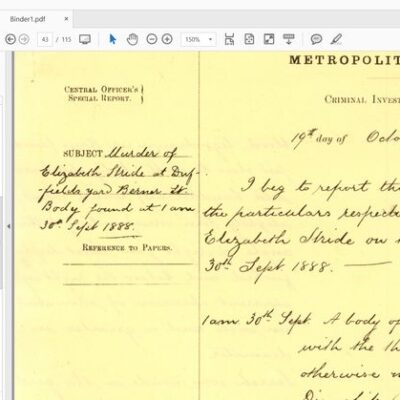
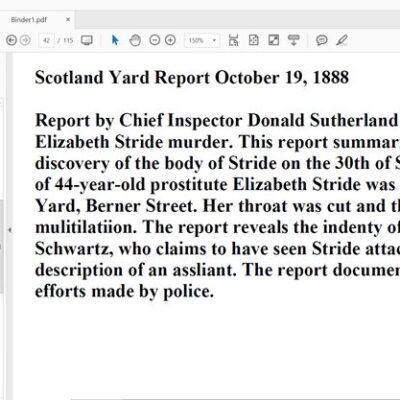
Jack the Ripper – Whitechapel Murders: London Police, Scotland Yard, and FBI Case Files
$19.50 Add to Cart -
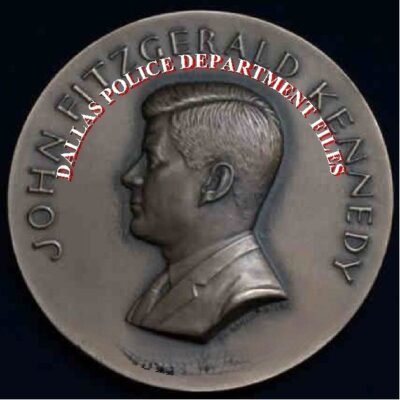
John F. Kennedy Assassination Dallas Police Department Files
$19.50 Add to Cart -
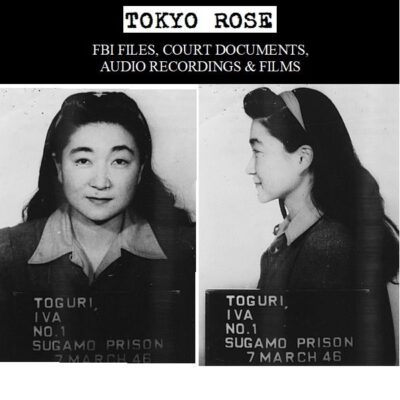
Tokyo Rose FBI Files, Court Documents, Audio Recordings & Films
$0.00 Add to Cart -
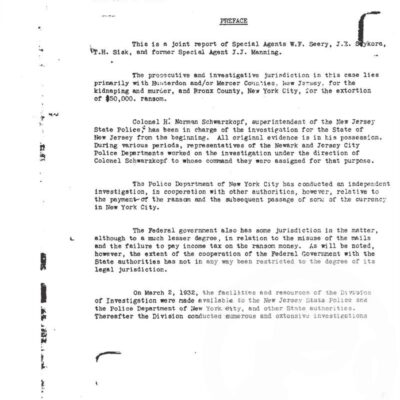
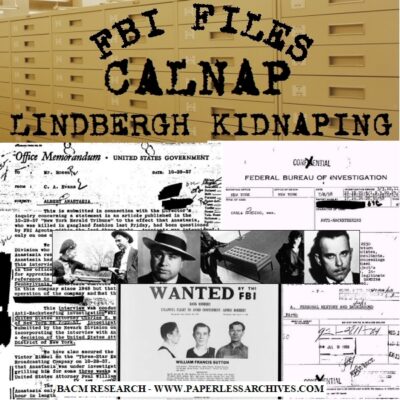
FBI Files: Charles Lindbergh Baby Kidnapping Case
$19.50 Add to Cart